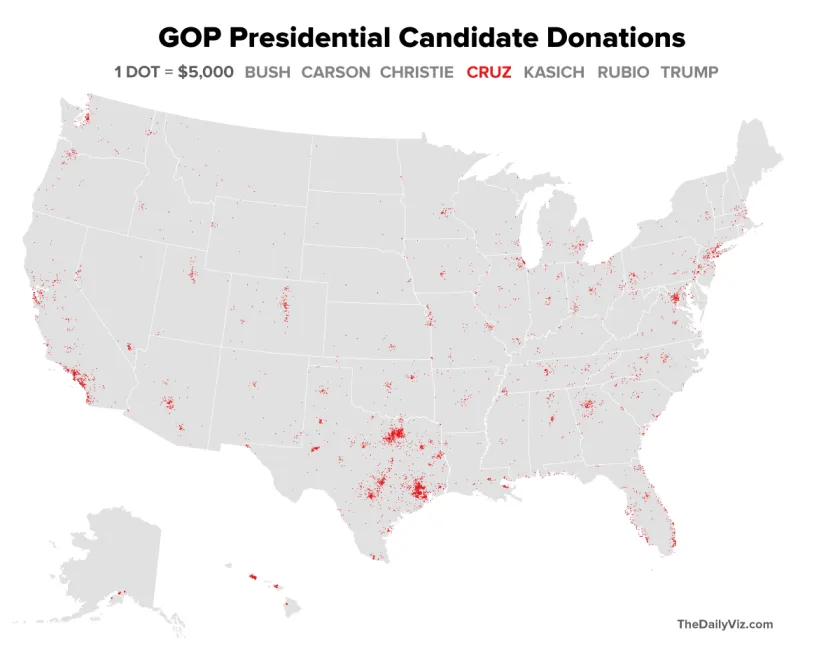Posts tagged "Campaign Finance"

Mapping GOP Campaign Cash by Density
The GOP presidential candidates collectively have raised more than $300 million in this election cycle, according to Federal Election Commission data. Here's a quick look at where several of those candidates...
Read more →
Candidate Fundraising vs. Super PAC Spending in January
From Huffington Post: Reports about January’s fundraising numbers, released on February 20, have focused on two narratives: Mitt Romney’s limited fundraising and high burn rate and the role that super...
Read more →
Colbert and the Clouds
Stephen Colbert this week used word clouds — visual representations of word frequencies in selected blocks of text — to tell a story about his political action committee. Colbert recently...
Read more →
Rick Perry: Fundraiser
Now that Texas Gov. Rick Perry, R-Texas, is officially in the presidential race, reporters are noting his campaign fundraising prowess as a possible strength that could propel him to the GOP nomination: ...
Read more →
Congressional Campaign Totals
Members of Congress recently filed their quarterly campaign-finance reports, which detail their political fundraising, spending, cash on hand and debts. The Center for Responsive Politics posted the totals for all...
Read more →
Financing Texas Elections: 2010
Another cross-post from my work blog: The 2010 political campaigns are over, but looking back at the fundraising and spending that financed them is now fully possible thanks to records...
Read more →
German Political Donations
From Visual Complexity: “This radial convergence interactive graphic shows the money flow from private donators to parties in the German Bundestag.” Pretty fancy:
Read more →